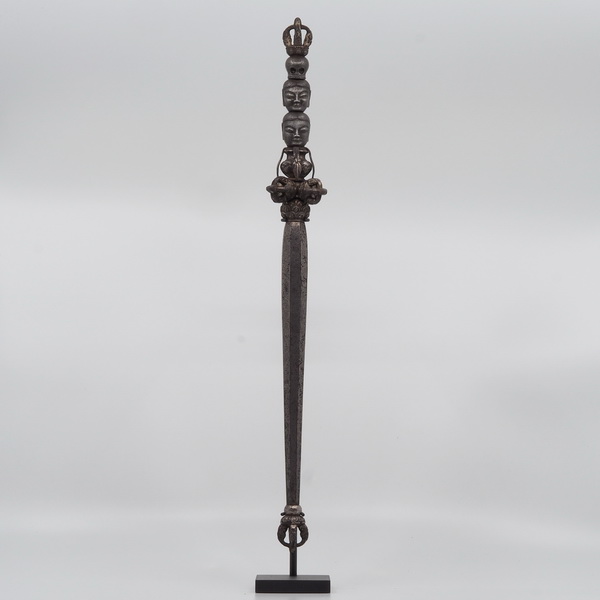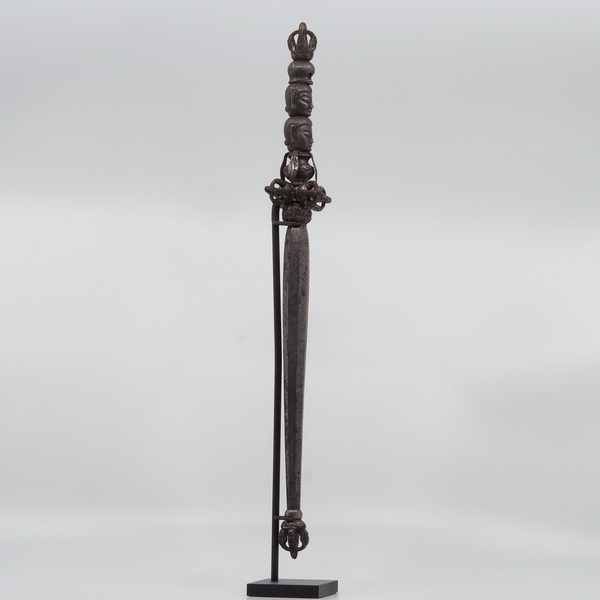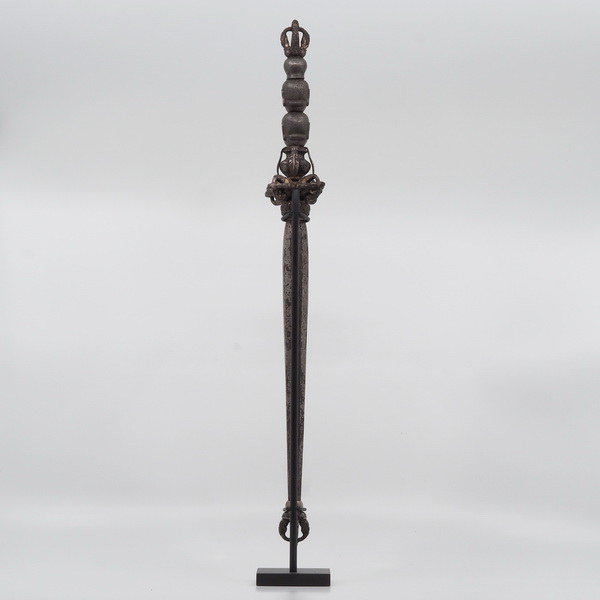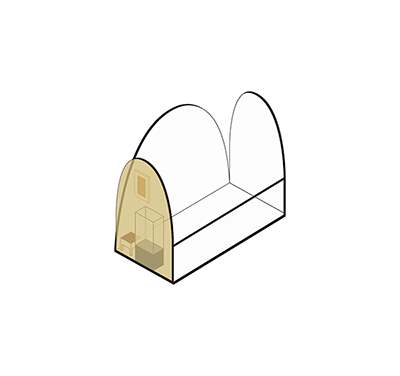ABR 075
Code: ABR 075
Country: Sino Tibetan
Style: Ming Dynasty - Yongle Period
Date: 1403 - 1424
Dimensions in cm WxHxD: 43.8
Materials: Iron with silver overlay
Khatvanga - magic sceptre
The khatvanga is a ritual scepter. It appears in iconography as one of the main attributes of the great Indian master and magician Padmasambhava. He is said to have introduced the object into Tibet. The khatvanga is also held by various religious figures as a sign that they identify with the central deity of a ritual. The khatvangais the attribute of dakinis (cosmic dancers of space) and of other male or female deities in their wrathful appearance. The presence of the khatvanga evokes the presence of the opposite sex.
The structure of the khatvanga is characterized by the superposition of the double vajra (vishvajra), the vase of abundance and of three human heads in different stages of decomposition. A particularly rich symbolism is connected to this structure. The double vajra represents the solid earthly basis surrounding the mythical Mount Meru, represented by the Vase of Abundance (kalasha). The three heads stand for the world of desire (kamaloka), the world of pure form (rupaloka) and the world of formlessness (arupaloka). The whole is framed by two half vajras, which stand for the paradise of the Buddhas. The octagonal handle represents both the central axis of Mount Meru and the horizontal directions.
The khatvanga is a ritual scepter. It appears in iconography as one of the main attributes of the great Indian master and magician Padmasambhava. He is said to have introduced the object into Tibet. The khatvanga is also held by various religious figures as a sign that they identify with the central deity of a ritual. The khatvangais the attribute of dakinis (cosmic dancers of space) and of other male or female deities in their wrathful appearance. The presence of the khatvanga evokes the presence of the opposite sex.
The structure of the khatvanga is characterized by the superposition of the double vajra (vishvajra), the vase of abundance and of three human heads in different stages of decomposition. A particularly rich symbolism is connected to this structure. The double vajra represents the solid earthly basis surrounding the mythical Mount Meru, represented by the Vase of Abundance (kalasha). The three heads stand for the world of desire (kamaloka), the world of pure form (rupaloka) and the world of formlessness (arupaloka). The whole is framed by two half vajras, which stand for the paradise of the Buddhas. The octagonal handle represents both the central axis of Mount Meru and the horizontal directions.






